- 2023
- Nov
- 26
A Heathkit IM-1212 from the Fort Wayne Hamfest - making it work again.
One of the things I picked up at the Fort Wayne hamfest was a Heathkit IM-1212 NIXIE DVM. This device was sold as a kit, and was also known as the Bell & Howell IMD 202-2, as well as a DeVry branded unit. They were all the same, with different branding on the front panel.
The device itself is a 2 1/2 digit meter, and uses discrete components - all ICs are common TTL stuff - to do it’s work. It’s not the most accurate thing in the world, but I imagine it was designed to help you learn about A/D conversion and other concepts while giving you a device that you could (mostly) use at the end.
This unit was sold as working, which I verified with a 120VAC inverter/battery pack from the tool company in the harbor. I offered the guy a $20 for it, which he accepted and I took my purchase home.
It’s not in bad shape for the age, a bit of discoloration on the front panel and the obligatory tape residue on the top of the device.
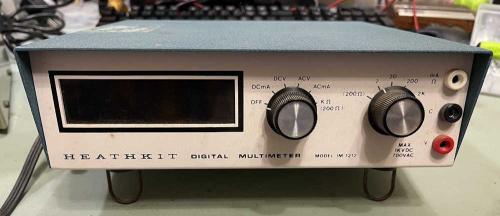
It came with the original instruction manual, which is useful for troubleshooting any issues.
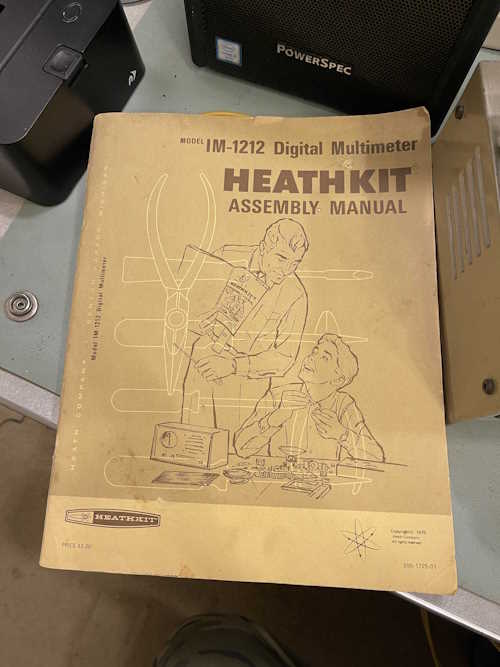
All of the tubes are nice and bright like it doesn’t have many hours on it. Even the NE-211 bulbs that are normally shot don’t exhibit any flickering or problems ionizing.
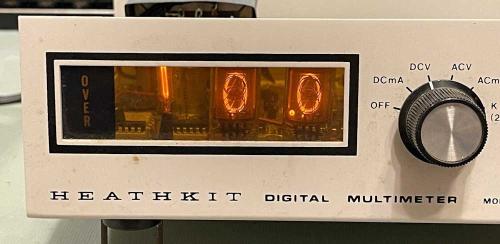
I did notice a few issues, there’s a rattle inside. Something is broken. The negative jack is also loose, which is probably just a nut come loose. The device also doesn’t respond to any input - something to do with the loose negative jack, perhaps?
Time to open the top cover. Notice the line of big beige resistors on the left and the one blue specimen at the bottom? These are calibration resistors, and one had apparently broken at some point, as the rattle was the remains of an old part. The original owner hadn’t removed the debris for some reason.
You’ll also notice there’s a number written on the paper cover. This is the DC calibration voltage as provided by Heath. It’s wrong, so ignore it and get a good 3 2/3 digit meter and measure the DC cal point. Mine turned out to be 1.901, so I used that later during calibration.
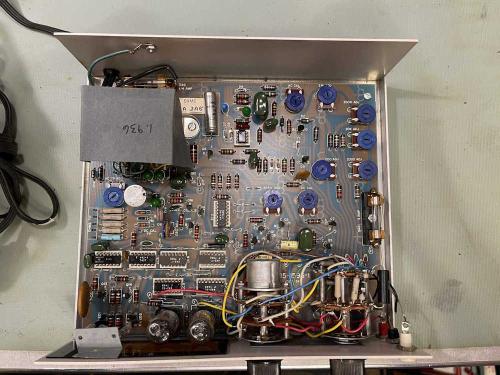
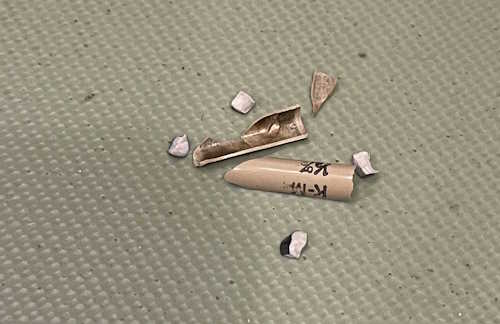
I discarded the broken pieces and looked at the negative jack. Sure enough, the nut was backed off, and that was because the cheap plastic threads on the jack were worn. While it tightened up, one more turn would knock it back. That will have to be replaced if I want to put this into service, but I think where it’s going it will be connected and let set as a monitor device.
The loose jack was also the cause of the no reading issue. The loose jack and solid wire insured the wire itself broke. That was an easy fix, just a quick re-solder and we’re back in business.
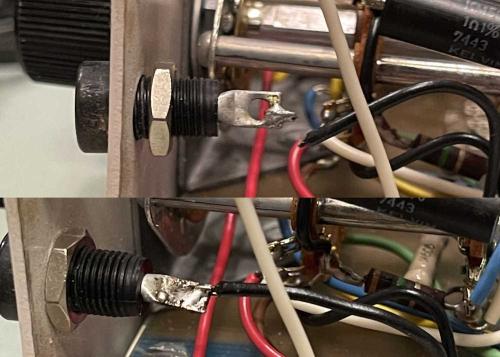
Time to hook it up to a power supply and see what it reads. It’s close, I guess for something of unknown quality it’s fine. As I stated earlier, these weren’t known for being the most accurate of devices, nor were they known for staying where you put them. Fortunately, the DC calibration is pretty easy, just requiring the device having been on for some time to temperature stabilize.
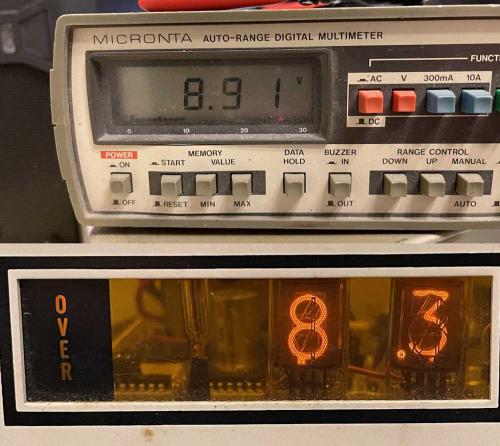
I’ve already posted the DC calibration procedure for someone, so if you haven’t read it you can do so here: https://wereboar.com … t-im-1212-nixie-dvm/
I don’t think there’s much more to say about this device that hasn’t been said already by many others. I’m planning on making a small board that switches between the different voltages in my network rack, so that may show up at some point. Until then, stay tuned for pictures from Fort Wayne and the Scott Antique Market at the Ohio Expo.